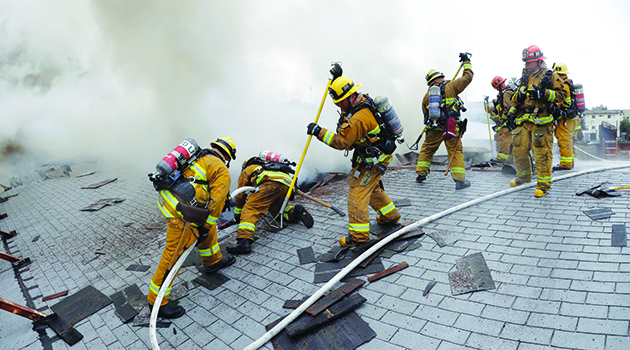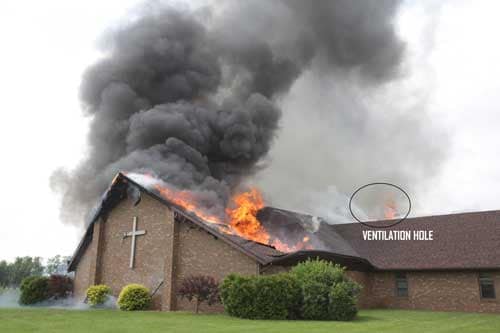Proper ventilation operations on flat roof structures can prevent flashover prevent the spread of fire in cocklofts and attics and make it easier and safer for members to conduct search.
Fire engineering roof ventilation.
Unvented roofs also.
One of the truck company functionsfirefighters must contend with on the fireground is vertical ventilation and in some cases this entails dealing with flat roofs.
Or when adding eave vents would clash with the house s architectural style.
Ventilation allows the chemicals smoke and heat evacuate out.
The ventilator equipment must be located on the roof or in the upper third of the wall of the building.
Fireground safety procedures are constantly addressed along with proper tool use and roof movement.
Peaked roof ventilation lieutenant bob pressler discusses roof styles often encountered by fire personnel equipment needs roof access and types of cuts required for successful ventilation.
Ventilation openings in these steel roof decks frequently result in cantilevered sheets of roof decking which were strong enough to support our weight when they were supported at their ends and.
An unvented roof is often the only viable option when roof framing is complicated such as when there are hips valleys dormers or skylights that would prevent eave to ridge ventilation.
A flat roofwill comprise of.
When we talk about roof ventilation we often focus on the cut itself.
Pitched roof ventilation can be one of the most hazards operations on the fireground yet it is one of the most important assignments.
When the house has no soffits and hence no soffit vents.
The two types of cuts that firefighters can use can be made with either a rotary saw or a ventilation saw depending upon the roofing material.
Ridge ventilators slope ventilators or louvred ventilators.


























